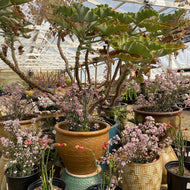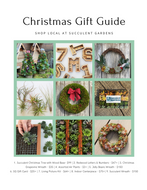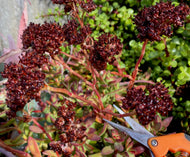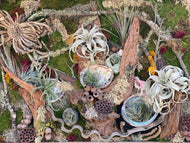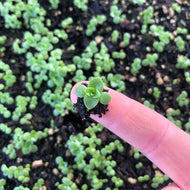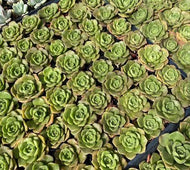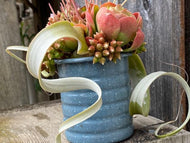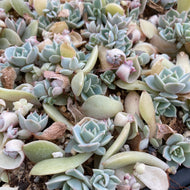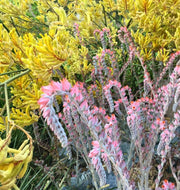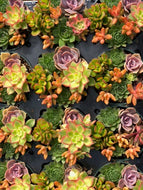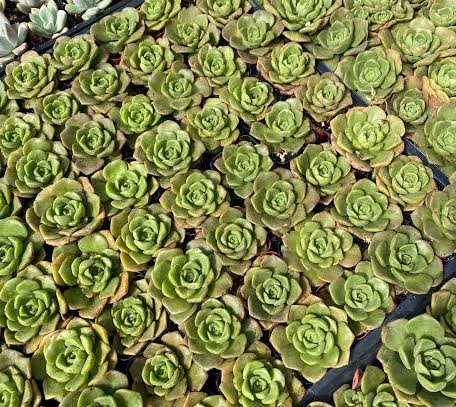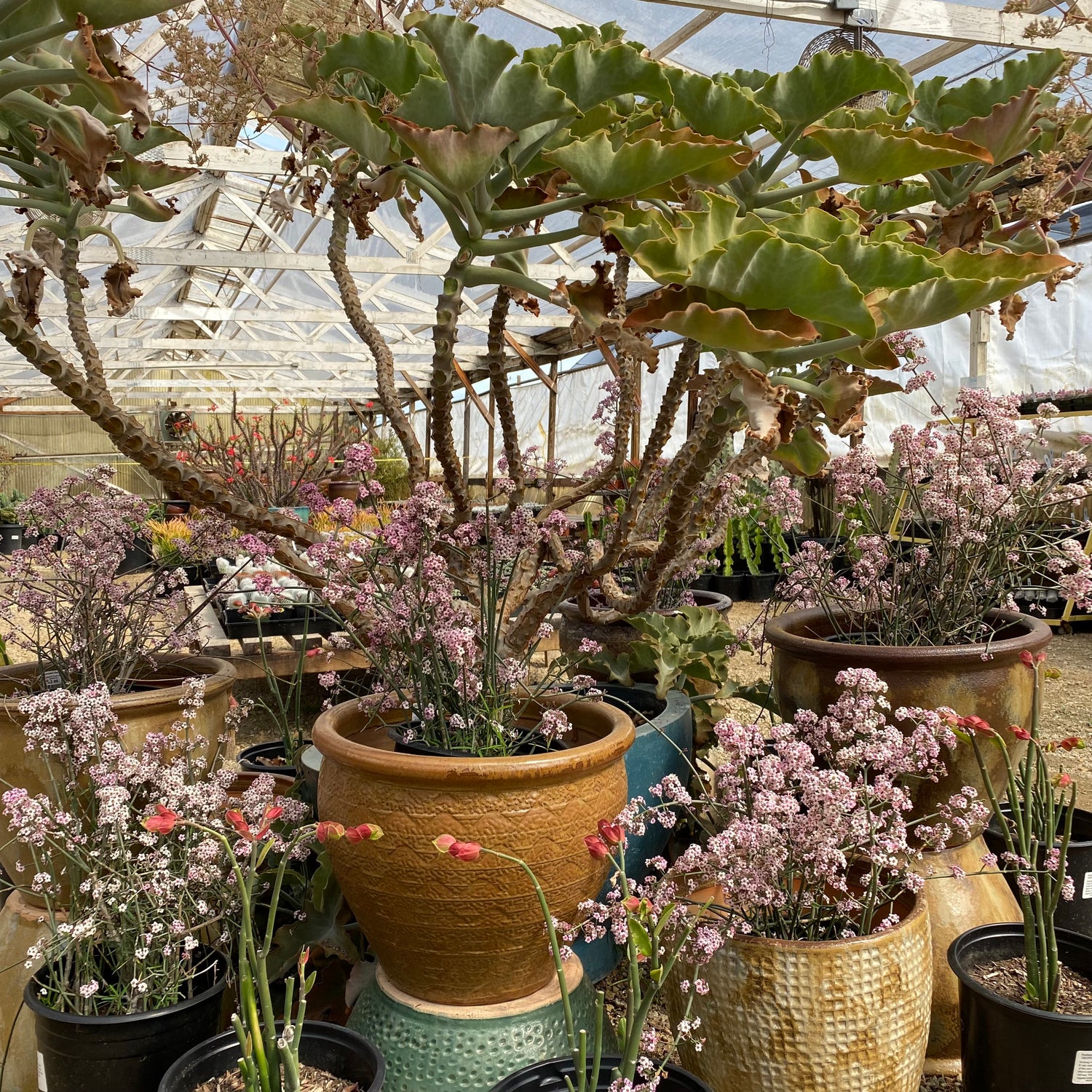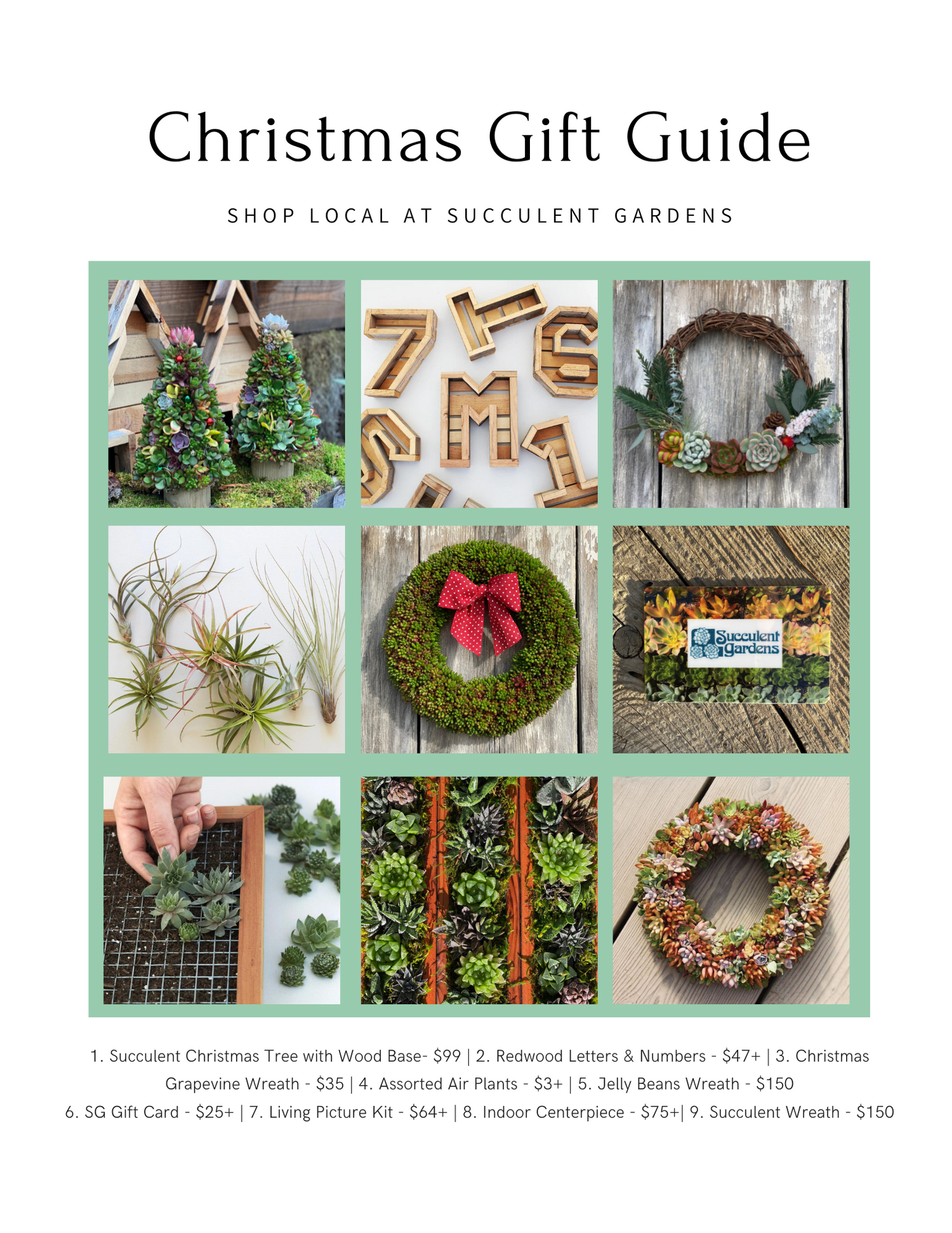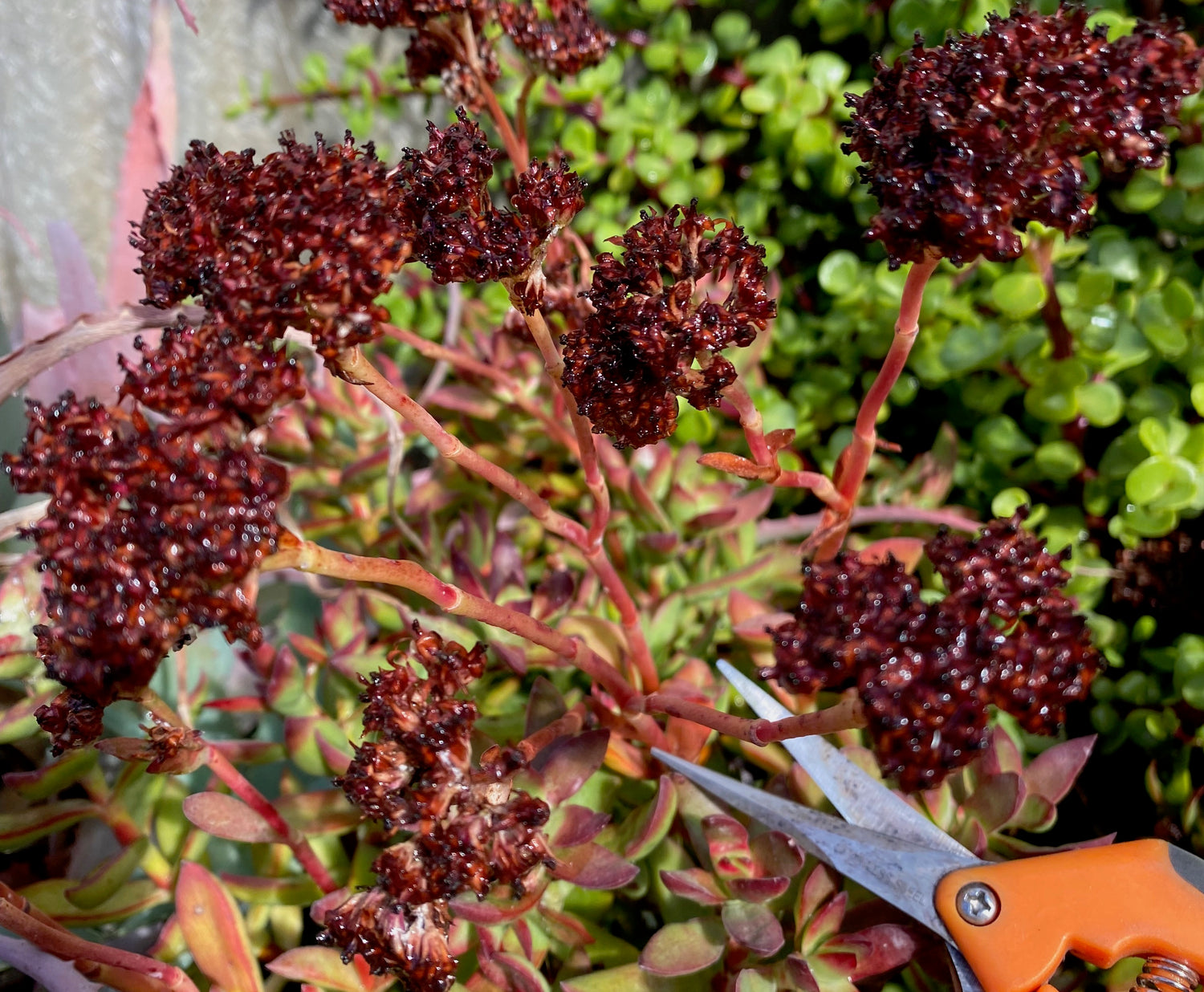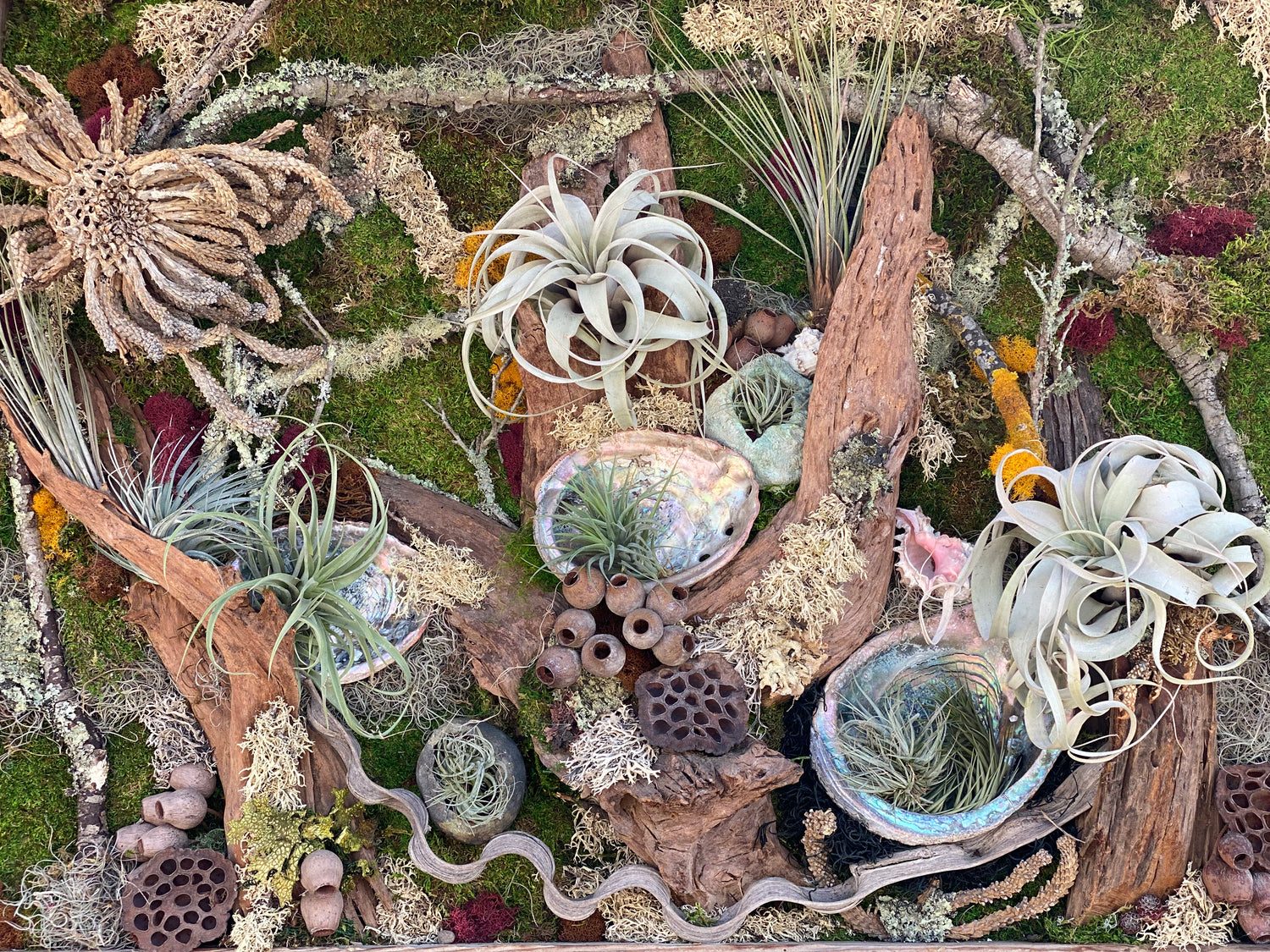Succulents are commonly propagated from cuttings, offsets, leaves, and division. Growing succulents from seed is an educational and fun way to obtain plants in larger numbers. Some succulents, such as Dudleya, Lithops, Echeveria and Cacti, are only grown from seed because it is the most practical way to propagate them. This is because many succulents do not offset as freely as others. Nurseries also like to offer succulents in smaller sizes. This is why you don't see different succulents in 2" pots or if you do, they may be more expensive because they are grown from seed.

Growing succulents from seed is a rewarding and fun way to learn about the entire life cycle of a plant. The first step in this process is obtaining seed. Many succulent seed sources online are not reputable and can be hard to find. The best way to know what you're getting is by collecting seed from your own collection.

The ability to collect seeds depends on the maturity and cross-pollination of your mother plant. If you have a young plant, it may take a few years for the plant to flower. Aeonium, Greenovia, and Agave are all monocarpic genera; meaning the rosette will flower once in its life time and it may take longer to be able to harvest seed from. Aeonium are fast-growers and will eventually flower annually, off of different offsets, once established in the garden.

Many succulents need to be cross-pollinated, which means there needs to pollen transferred from one plant to another of the same species. If you do not see pollinators visiting your plants, or your collection is in an enclosed space that does not give access to pollinators, you will need to use a small paintbrush and pollinate them yourself. Note: Succulents that are genetically identical (cuttings from the same plant) will not produce viable seed. You will be able to tell pollination has occurred when the fruit starts to swell and become ripe.
How to Collect:
To achieve the highest viability, seed capsules should be fully ripe and dry before collecting. Some fruits will split open and disperse on their own, such as Aloe spp. In this case it is important to collect when the seed capsule is dry/ brown, but before the seeds fall on the ground or get blown away. Set a plate or tray under the flower stalk or use a small net or sock to capture them.


Pictured above: An unripe Glottiphyllum nellii fruit is green (left). A dry, brown, and hard seed capsule that is ready to be harvested (right).
For microscopic seeds such as Aeonium, Dudleya, Echeveria, place a paper bag over the inflorescence, cut the stalk, and turn the bag upside down in order to collect without losing seed to the wind.
DO NOT ever collect seed from native habitats. This is considered poaching unless you have a permit and punishable by law.


Pictured above: Aeonium 'Ballerina' seed not ready to be harvested (left) and Aeonium 'Thundercloud' seed ready to be harvested and planted (right).
How to Process Seeds:
Seeds can easily be processed by breaking open the capsules by hand. Smaller seeds can be processed by using a small grinder to separate the seed from the capsules and then sifting the seeds from the chaff with a mesh strainer. Hard seed capsules such as Mesembs (Lithops, Glottiphyllum, etc.) can be removed by placing the seeds in a Ziploc or paper bag, beaten with a hammer, and then removed by hand.
Note: Always process seed indoors because a gust of wind can quickly blow them away.
How to Store Seeds:
Store seeds in paper bags or seed packets in dry, protected areas. Humidity and heat will reduce viability dramatically. If you plan to store seeds in plastic bags, be sure the seeds are completely dry. If seeds are harvested prematurely, the excess moisture will cause seeds to rot in glass or plastic. Label your package with the species name, date collected, and location. Seeds can be saved for years and stay viable when stored correctly.

Collecting and growing from your own seed is a sustainable way to grow many plants. Through genetic diversity, you will find many variations of foliage color and shape. This is where the real fun begins and you might even be able to name a special selection of your own.


